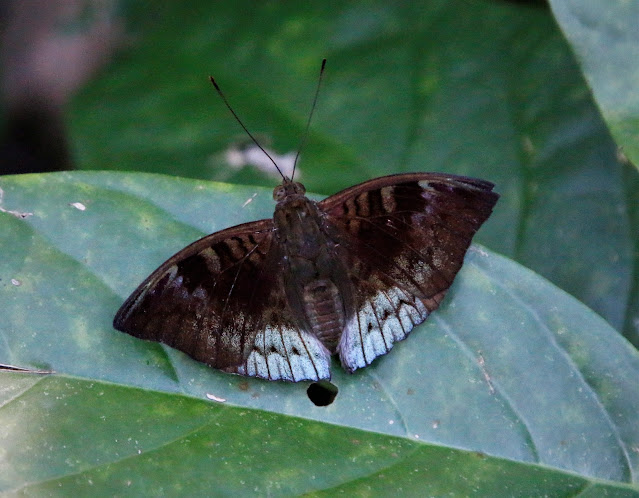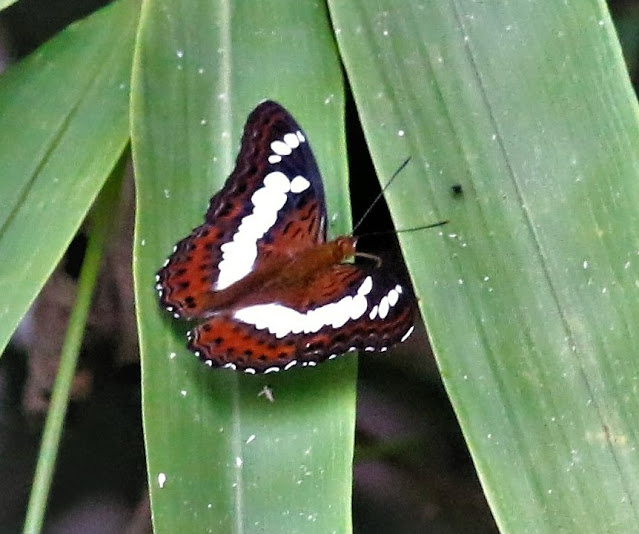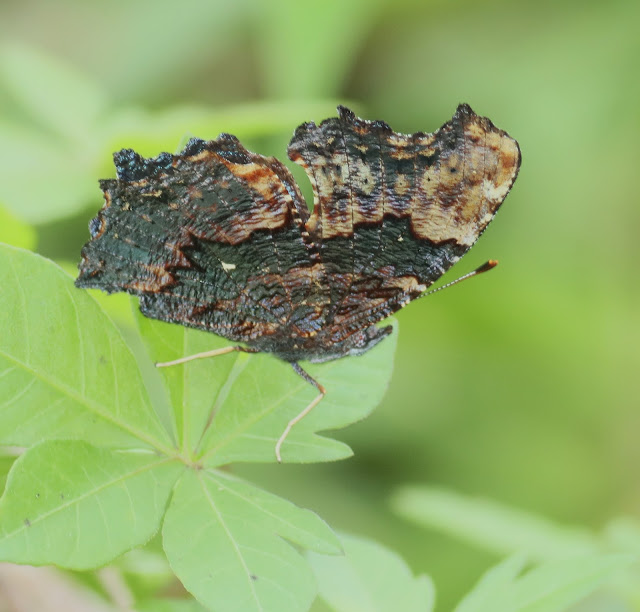Rain has kept pouring down towards the end of September. According to the Met. department here, the interchanging monsoon season will only ends in November. Nevertheless there were a few lifers (i.e butterflies which were seen for the first time) which I have managed photographed in this late September month.
The above butterfly is called a "Wizard" (Rhinopalpa polynice eudoxia). Its intricate underwing patterns is indeed mesmerising. So delighted to be able to take its photos as it is reported to be an uncommon and moderately rare butterfly of the primary forest over here.
They can be quite restless at times if you try to approach them closer.
Their upperside / dorsal wings are equally stunning.
My second lifer is this one below.
This is a Forest Quaker (Pithecops corvus corvus).
Didn't manage to hear it quacks but it was certainly a tiny butterfly at just 1.2cm. They are reportedly only common in forested areas.
The next is this skipper below.
Common Redeye (Matapa aria)
Despite its name, this is a rather uncommon skipper though not rare. It has no subspecies equivalent in this region at the moment.
The above butterfly concludes my lifers for the month of September. It looks like an Athyma or Neptis but it's not.
The above is a Phaedyma columella singa (Short-banded sailor)
Its local name is "Pelayar Jalur Pendek". It is the only species which can be found in Peninsular Malaysia and because of this it is probably uncommon here as compared to other places such as Singapore or India etc.
The following are other butterflies seen in late September.
Malayan Owl (Neorina Iowii neophyta)
Most of the time this butterfly will often be seen flying swiftly along the jungle trails and hardly puddle on the roadside. This one gave me an opportunity to see clearly its upperside.
Most of the time you would most likely able to photographed its underside / ventral wings.
Tawny Rajah (Charaxes bernadus crepax)
This is an uncommon butterfly.
Very skittish at times and it can fly swiftly and in an undulating manner.
Common Hedge Blue (Acytolepis puspa lambi)
This butterfly has a very nice bluish color upperside.
Chocolate Pansy (Junonia hedonia ida)
Please check whether your mouse cursor is on its wing.
This should be a Lesser Darkwing (Allotinus unicolor unicolor)
Ciliate Blue (Anthene emolus goberus)
This too has a beautiful bluish upperside.
Indian Palm Bob (Suastus gremius gremius)
The last time I saw this butterfly was in March and April this year.
Dark Banded Ace (Halpe ormenes vilasina)
Banded Demon (Notocrypta paralysos varians)
It has been awhile since I last saw this skipper.
Malayan Baron (Euthalia monina monina)
A pristine looking male.
Common Imperial (Cheritra freja frigga)
A fairly common butterfly in lowland forest.
It has a rather plain looking upperside.
Mottled Emigrant (Catopsilia pyranthe pyranthe)
This is reported to be a migratory butterfly. It can be restless and difficult to photographed.
Commander (Moduza procris milonia)
Its upperside is equally stunning.
Edited: Experts reckoned that the above is a female Tanaecia iapis iapis (Horsfield's Baron) instead of Euthalia apheda yamuna (Streaked Baron).
Malayan Laskar (Lasippa tiga siaka)
The above is the more common among the 'Lasippa' species.
Athyma pravara helma (Lance Sergeant)
The above is a rather uncommon Athyma which I was lucky to see it by the roadside. Usually it is more 'common' in the forest.
Ragadia makuta siponta (Striped Ringlet / Malayan Ringlet)
Stay tune for more butterflies in October !


















































.JPG)